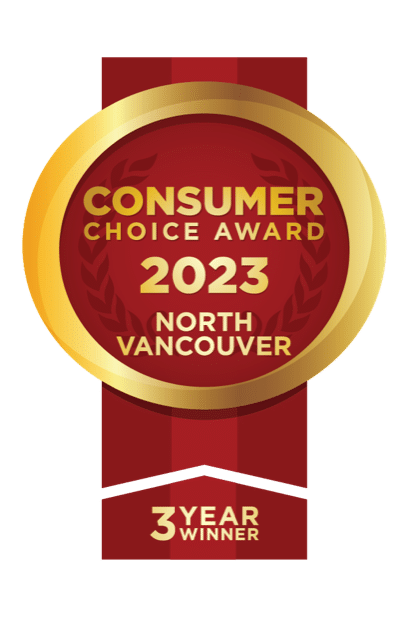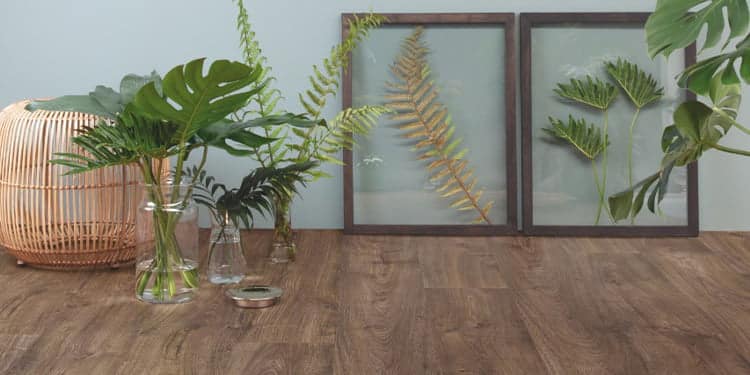
Sustainable flooring options for your Vancouver home
Green products and practices benefit not only the environment but also good for people. They improve air quality, reduce asthma attacks, and even protect against cancer. Incorporating environmentally friendly features into the construction process can add value to projects for years to come. These options include solar panels, rainwater catchment systems, compost bins, natural light fixtures, and, last but not least sustainable flooring solutions.
Why not start from scratch if you plan to create a greener space? Many different floors are available today, offering a sustainable, clean, and reliable base for any room. Sustainably made floors are becoming increasingly popular. Not only is it environmentally friendly, but it’s also a great way to save money. In this blog post, we’re going to discuss three different types of sustainable flooring that you can choose from.
Exploring the Benefits of Sustainable Flooring
Sustainable flooring goes beyond being just a passing fad; it represents a genuine commitment to both environmental responsibility and indoor health quality. This type of flooring utilizes materials that are either renewable, recyclable, or have a minimal impact on the environment. Take bamboo, for example, a resource that renews rapidly and has gained popularity due to its durability and eco-friendliness. Another excellent option is cork, known for its natural warmth and ability to insulate against sound. By opting for sustainable flooring, homeowners actively contribute to the preservation of natural resources and the reduction of their carbon footprint.
In addition to its environmental benefits, sustainable flooring also offers a range of other advantages. For instance, it can enhance the overall aesthetic appeal of a space, providing a unique and stylish look. Furthermore, sustainable flooring often boasts exceptional durability, ensuring that it can withstand the test of time and heavy foot traffic. Additionally, these flooring options are known for their low maintenance requirements, making them a practical choice for busy households. By selecting sustainable flooring, homeowners can enjoy both the visual appeal and the functional benefits of their investment.
When it comes to sustainable flooring, the options are plentiful. One popular choice is reclaimed wood, which involves repurposing wood from old structures and giving it a new lease on life. This not only reduces waste but also adds a touch of character and history to any space. Another option is linoleum, a natural material made from linseed oil, cork dust, wood flour, and other renewable resources. Linoleum is not only durable but also biodegradable, making it an excellent choice for those looking for a truly sustainable flooring option.
In recent years, sustainable flooring has gained significant attention and popularity in the design and construction industry. Architects and designers are increasingly incorporating sustainable flooring materials into their projects, recognizing the importance of creating environmentally responsible spaces. Additionally, many manufacturers have responded to the growing demand for sustainable flooring by expanding their product lines and offering a wider range of options to consumers. This increased availability has made it easier for homeowners to make sustainable choices when it comes to their flooring needs.
The benefits of sustainable flooring extend beyond the individual homeowner. By choosing environmentally friendly materials, homeowners contribute to the overall health of the planet and future generations. Sustainable flooring helps reduce the depletion of natural resources, minimize carbon emissions, and decrease waste production. It also promotes healthier indoor air quality by using materials that are low in volatile organic compounds (VOCs) and allergens. These factors not only benefit the environment but also contribute to the well-being and comfort of those living in the space. For more information on sustainable materials, visit Natural Resources Canada.
The Role of Sustainability in Modern Flooring Design
Modern flooring design has embraced sustainability, not only in materials but also in manufacturing processes and lifecycle management. The industry has shifted towards reducing waste during production, using less water and energy, and ensuring products are recyclable at the end of their lifespan. This reflects a broader trend in interior design, where sustainability is now just as important as aesthetics and functionality. Consumers are actively seeking options that align with their environmental values without compromising on style or quality.
As the demand for sustainable flooring continues to grow, manufacturers are stepping up their efforts to meet these expectations. They are investing in innovative technologies and practices that prioritize sustainability throughout the entire production process. By incorporating eco-friendly materials and implementing energy-efficient manufacturing techniques, they are able to reduce their environmental footprint while still delivering high-quality flooring options.
In addition to sustainable materials and manufacturing processes, lifecycle management is also a key aspect of modern flooring design. Manufacturers are now taking into consideration the entire lifespan of their products, from production to disposal. They are designing flooring options that are not only durable and long-lasting but also easy to maintain and repair. This approach ensures that the flooring can be used for a longer period of time, reducing the need for frequent replacements and ultimately minimizing waste.
The shift towards sustainable flooring design is driven by both consumer demand and industry-wide recognition of the importance of environmental responsibility. Consumers are becoming more conscious of the impact their purchasing decisions have on the planet, and they are actively seeking out products that align with their values. At the same time, manufacturers are realizing the long-term benefits of adopting sustainable practices, including cost savings and improved brand reputation.
Incorporating sustainability into flooring design is not just a trend, but a necessary step towards a more environmentally conscious future. By prioritizing sustainable materials, manufacturing processes, and lifecycle management, the industry is making significant strides towards reducing its environmental impact. This shift is not only beneficial for the planet, but also for consumers who are looking for flooring options that are both stylish and eco-friendly. Discover more about sustainable design trends at Sustainable Architecture & Building Magazine.

How to Choose the Right Sustainable Flooring for Your Home
Choosing the right sustainable flooring involves considering factors like durability, maintenance, and compatibility with your home’s aesthetic. For high-traffic areas, materials like bamboo or recycled hardwood might be ideal. In rooms prone to moisture, cork or linoleum could be more appropriate. It’s also crucial to consider the installation process and whether the materials contain any volatile organic compounds (VOCs) that could affect indoor air quality. Consulting with a flooring expert can help in making an informed decision that balances sustainability with practicality.
When it comes to selecting the perfect sustainable flooring, there are several factors to take into consideration. These include durability, maintenance, and how well it fits with the overall aesthetic of your home. For areas that experience a lot of foot traffic, materials like bamboo or recycled hardwood may be the best choice. On the other hand, if you’re dealing with rooms that are prone to moisture, options like cork or linoleum might be more suitable. Additionally, it’s important to think about the installation process and whether or not the materials contain any volatile organic compounds (VOCs) that could potentially impact the indoor air quality. To make a well-informed decision that balances sustainability and practicality, it’s always a good idea to consult with a flooring expert. They can provide valuable insights and guidance based on their industry knowledge and experience. Visit Ecohome for more guidance on selecting sustainable flooring.
The Impact of Sustainable Flooring on Indoor Air Quality
Sustainable flooring has a significant impact on indoor air quality, which is crucial for a healthy home. Many eco-friendly flooring options are low in VOCs and other harmful chemicals commonly found in traditional flooring materials. This reduction in airborne pollutants leads to better air quality and a healthier living environment. Additionally, sustainable materials like cork possess natural antimicrobial properties that further enhance indoor air quality.
Sustainable flooring not only improves indoor air quality but also contributes to a more sustainable and environmentally friendly home. By choosing eco-friendly flooring options, homeowners can reduce their carbon footprint and promote a greener lifestyle. These sustainable materials are often made from renewable resources and have a lower impact on the environment compared to traditional flooring materials.
In addition to the environmental benefits, sustainable flooring offers a wide range of design options. Homeowners can choose from various styles, colors, and textures to match their aesthetic preferences. Whether it’s hardwood, bamboo, or cork, there is a sustainable flooring option to suit every taste and interior design theme.
Furthermore, sustainable flooring is known for its durability and longevity. Unlike traditional flooring materials that may wear out over time, eco-friendly options are designed to withstand heavy foot traffic and daily wear and tear. This means homeowners can enjoy their beautiful and sustainable floors for many years without the need for frequent replacements or repairs.
Another advantage of sustainable flooring is its ease of maintenance. Most eco-friendly materials are resistant to stains, scratches, and water damage, making them ideal for high-traffic areas and households with children or pets. Regular sweeping and occasional mopping are usually sufficient to keep these floors looking clean and fresh.
Moreover, sustainable flooring can contribute to a quieter and more peaceful home environment. Many eco-friendly options have excellent sound insulation properties, reducing noise transmission between floors and rooms. This is particularly beneficial for multi-story homes or apartments where noise control is essential for comfort and privacy.
Additionally, sustainable flooring can add value to a home. As more homeowners prioritize sustainability and eco-friendliness, properties with sustainable features, including flooring, are becoming more desirable in the real estate market. Investing in sustainable flooring can potentially increase the resale value of a home and attract environmentally conscious buyers. For more on indoor air quality and flooring, visit Health Canada’s Indoor Air Quality.
Integrating Sustainable Flooring into Your Home’s Design
Integrating sustainable flooring into your home’s design can be a seamless process. With a wide range of styles, colors, and textures available, it’s easy to find an option that complements your existing décor. Whether you prefer the warm, natural look of bamboo or the sleek, modern appeal of recycled glass tiles, there’s an eco-friendly flooring option to suit every design aesthetic. Finding the right balance between environmental considerations and personal style is key.
When it comes to sustainable flooring, there are numerous options to choose from. Cork flooring, for example, is not only eco-friendly but also provides excellent insulation and sound absorption. Another popular choice is linoleum, which is made from natural materials like linseed oil and cork powder. It’s durable, easy to maintain, and comes in a variety of colors and patterns. For those who prefer a more rustic look, reclaimed wood flooring is a great option. It adds character and charm to any space while reducing the demand for new timber.
In addition to being environmentally friendly, sustainable flooring also offers numerous benefits for homeowners. For starters, these materials are often more durable and long-lasting than traditional flooring options. They are designed to withstand heavy foot traffic and resist wear and tear, making them a smart investment for any home. Furthermore, many sustainable flooring options are hypoallergenic and resistant to mold and mildew, creating a healthier indoor environment for you and your family.
When it comes to installation, sustainable flooring can be just as easy to work with as traditional materials. Many options are available in click-lock or adhesive-backed formats, making them DIY-friendly. However, it’s always a good idea to consult with a professional installer to ensure proper installation and maximize the longevity of your new flooring. They can also provide guidance on maintenance and care to keep your floors looking their best for years to come. Explore design ideas at Canadian Home Design.
The Future of Flooring: Trends in Sustainability
The future of flooring is heading towards sustainability, with advancements in technology and materials science paving the way for more eco-friendly options. Innovations such as bio-based polymers and improved recycling processes are expected to further decrease the environmental impact of flooring. As consumer awareness grows, the demand for sustainable flooring is likely to rise, driving increased investment and innovation in this field.
Sustainability is becoming increasingly important in the flooring industry. With advancements in technology and materials science, there are now more eco-friendly options available. Innovations like bio-based polymers and improved recycling processes are expected to have a significant impact on reducing the environmental footprint of flooring. As consumer awareness continues to grow, the demand for sustainable flooring is expected to increase, leading to further investment and innovation in this area. Stay updated on flooring trends at Floor Covering News.
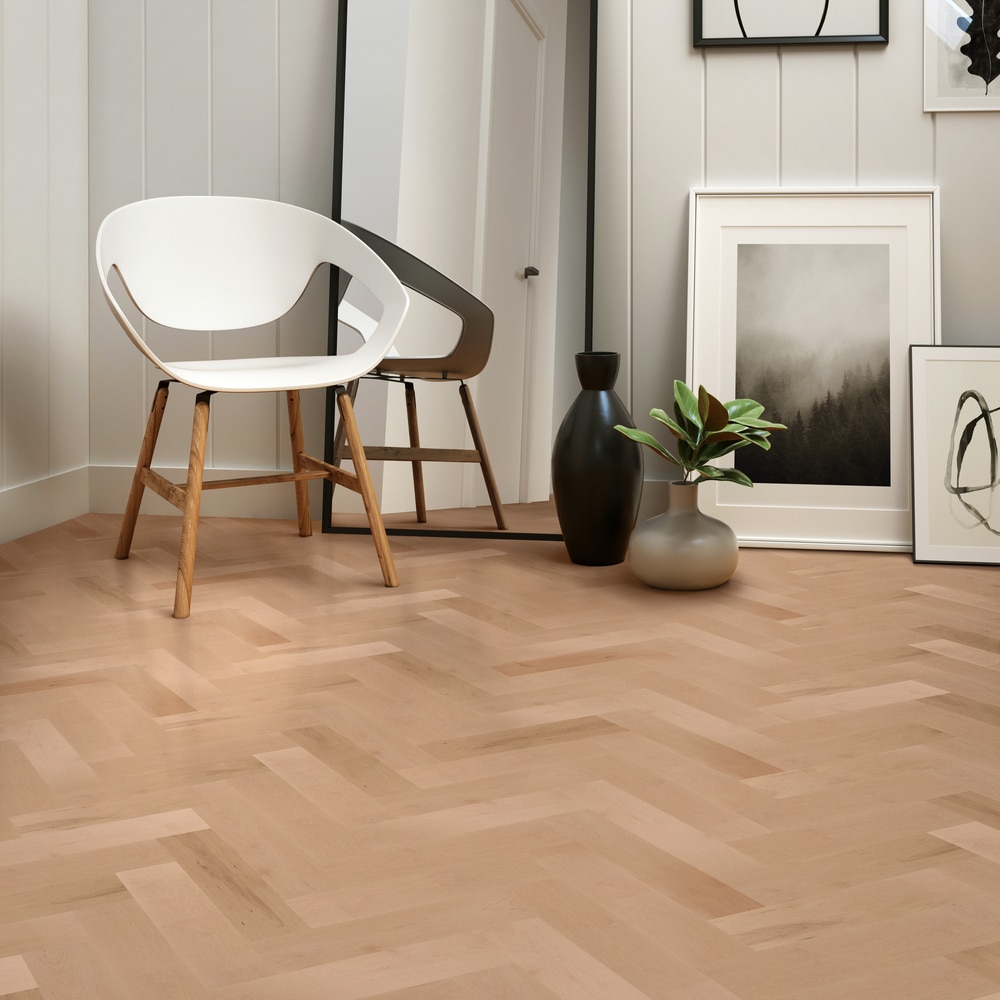
Understanding Eco-Friendly Flooring Materials
When exploring the realm of eco-friendly flooring, it is crucial to gain a comprehensive understanding of the materials that compose these sustainable options. Recycled and reclaimed wood floors present an excellent alternative, as they offer the timeless charm of wood without the detrimental environmental consequences associated with cutting down new trees. Linoleum, often mistaken for vinyl, stands as another eco-conscious choice, crafted from linseed oil, cork dust, and wood flour. Not only is it biodegradable, but it also comes in a wide array of colors and patterns. Furthermore, recycled glass tiles provide a distinctive aesthetic appeal while simultaneously promoting environmental sustainability.
Bamboo flooring is an increasingly popular option in the realm of eco-friendly flooring. Derived from the fast-growing bamboo plant, this flooring material boasts exceptional durability and strength. Additionally, bamboo is a renewable resource, making it an environmentally responsible choice. Cork flooring, made from the bark of cork oak trees, is another sustainable option. The harvesting process of cork does not harm the trees, allowing them to regenerate and continue absorbing carbon dioxide from the atmosphere. Moreover, cork flooring provides excellent insulation and is resistant to mold, mildew, and pests.
Concrete flooring may not be the first material that comes to mind when considering eco-friendly options, but it can be a sustainable choice. Concrete is a durable and long-lasting material that can be produced with a low carbon footprint. It can also be recycled and reused, reducing waste and minimizing environmental impact. Terrazzo flooring, composed of chips of marble, quartz, granite, or glass set in concrete, is another eco-conscious option. By utilizing recycled materials, terrazzo flooring reduces the demand for new resources while providing a visually stunning and unique flooring solution.
When it comes to eco-friendly flooring, carpet may not be the first choice that comes to mind. However, there are sustainable carpet options available. Wool carpet, for example, is a natural and renewable material that is biodegradable and can be recycled. Additionally, some manufacturers offer carpets made from recycled materials, such as plastic bottles. These carpets not only reduce waste but also provide excellent durability and comfort. It is important to look for carpets that are certified by reputable organizations, such as the Carpet and Rug Institute’s Green Label Plus program, to ensure their environmental credentials.
For those seeking a more unconventional eco-friendly flooring option, consider leather flooring. Made from recycled leather scraps, this unique flooring material offers a luxurious and distinctive look while reducing waste. Leather flooring is durable, easy to maintain, and can be a stylish addition to any space. Another alternative is rubber flooring, which is often made from recycled tires. Rubber flooring is not only eco-friendly but also provides excellent slip resistance and sound absorption properties. It is a versatile option that can be used in various settings, including gyms, playrooms, and kitchens. To learn more about eco-friendly materials, check out Green Building Canada.
Sustainable and Eco-friendly flooring option checklist:
- There are plenty of options available for eco-friendly flooring.
- When choosing an environmentally friendly option, consider how much water and energy will be required to produce the product.
- Some products are better suited to specific environments than others.
- Natural and renewable materials are excellent choices for sustainable flooring.
- Make sure that the product you choose will last for many years.
- Consider the toxicity of your floor before choosing it.
- Cork is a sustainable option for eco-friendly flooring.
- Engineered hardwood floors are an environmentally friendly alternative to conventional hardwood floors.
- Reclaimed wood is an environmentally friendly alternative to new wood.
- Carpets made from wool are an environmentally friendly option. They are durable and will last generations.
- Porcelain tile floors are highly durable and long-lasting.
What is sustainable flooring?
Sustainable Flooring is a term used to describe products made from natural materials such as wood, stone, bamboo, cork, rubberwood, recycled plastic, etc., which do not harm the environment. Sustainable Flooring is environmentally friendly because it uses less energy than traditional flooring and requires fewer resources. It is also suitable for your health because it doesn’t contain harmful chemicals like formaldehyde, phthalates, lead, arsenic, mercury, etc.
Flooring that will last for decades is a significant priority for many families looking to make a “green“ choice. A great way to help the planet while saving money is to choose the flooring that lasts for a long time. Not only does it save money over time, but it also saves energy and resources. The less likely you will ever need to replace or repair the floor, the better the environmental impact. Not to mention the financial impact.
Key Features of Sustainable Flooring
1) The use of renewable resources
2) The reduction of waste production
3) The recycling of waste products
4) The use of eco-friendly materials
5) The use of low-energy-consuming technologies
How Sustainable Flooring Can Help Save The Planet
The use of sustainable flooring can help protect our planet. It can help us conserve water, reduce pollution, and prevent deforestation. It can also help us preserve our forests and wildlife habitats.
To make sustainable flooring more accessible, there should be more education about this type of flooring. There should be more companies that produce these types of floors. We should encourage people to buy them so they can start making changes to their homes.
We must educate ourselves about what we put into our bodies. We must learn about the effects of chemicals on our health. We must understand the importance of recycling and reducing waste. We must know where our food comes from. We must know how to dispose of trash properly; this is the same as disposing of your old flooring when you’re planning to change your floor.
If we want to live sustainably, then we must change our lifestyles. If we want to save the earth, we must stop polluting it. We must stop wasting resources. We must stop destroying nature. We must stop consuming too much.
How Sustainable Flooring Can Help You Save Money In The Long Run
The main advantage of this kind of flooring is its durability. Because these floors are made from natural materials and are of higher quality, they last a lot longer. They do not require any maintenance, which makes them ideal for busy families who cannot afford to spend their time cleaning up after spills and stains.
The world is changing fast. Our planet is under threat. Climate change is real. But there is hope. There is an alternative—a better way.
A sustainable future. One where we can continue living without harming the environment. Where we can enjoy life without damaging the planet.
But how do we make these changes? What can we do?
Well, we can start thinking more carefully about our choices. We can begin to consider the impact of our actions. We can learn to live lightly on Earth. To consume less. To recycle. To reduce waste. To conserve energy. To protect wildlife. To preserve natural habitats. To protect the oceans. To protect the rainforests. To protect the air. To protect the water. To protect the soil. To protect the climate.
To protect ourselves. This is the beginning of a revolution. This is the beginning of a movement. This is the beginning.
Different types of flooring that are sustainable and eco-friendly:
- Cork flooring
- Wool carpet
- Bamboo flooring
- Engineered hardwood
- Recycled rubber
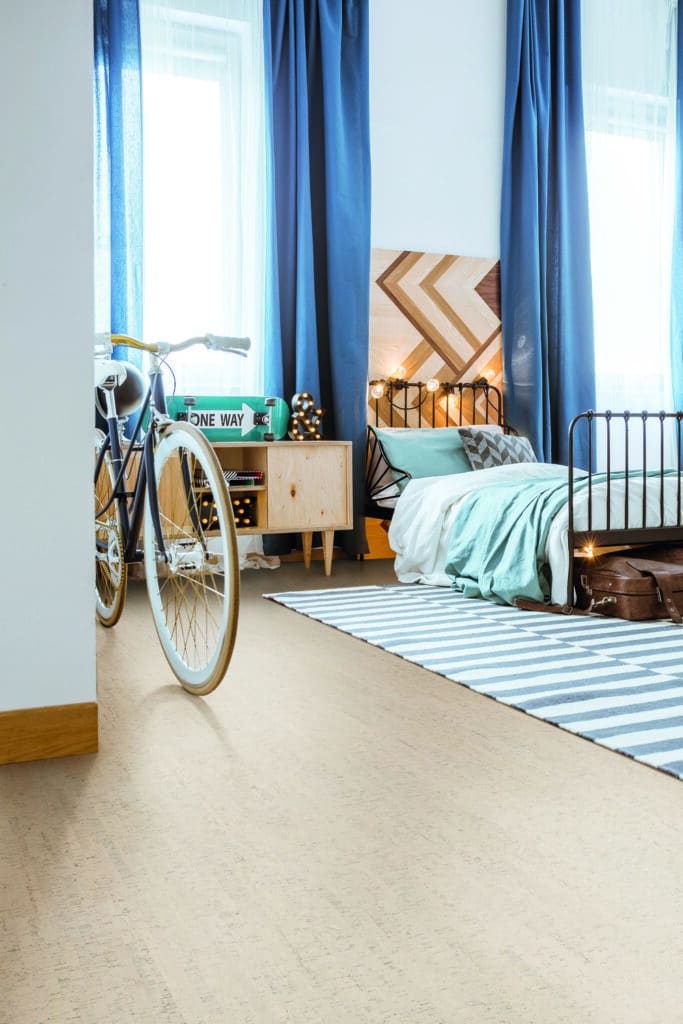
Sustainable Cork Flooring
Cork Flooring is a natural product made from the bark of the cork oak tree (Quercus suber). Cork is one of the oldest known materials used for making floors. It was first discovered in Egypt around 4000 BC. The Romans were the first to use it for their floorings. In the Middle Ages, they used it for roof tiles. Later, during the Industrial Revolution, it became popular for its acoustic properties. Today, it is still widely used for this purpose.
Cork Flooring is made from the bark of cork oak trees. The process begins when the bark is removed from the tree’s trunk. Then, the bark is dried and cut into thin strips. After that, the strips are soaked in water, so the sap is extracted from them. Finally, the strips are pressed together and compressed. This makes the material very dense while marinating flexibility.
There are many advantages of cork flooring. Cork is a renewable resource, so there is no need to worry about replacing it once it wears out. Cork is naturally resistant to moisture and bacteria, making it ideal for kitchens and bathrooms. It is also fireproof, which makes it perfect for living rooms and bedrooms. The most crucial advantage of cork flooring is its ability to absorb sound. This means that noise levels are reduced when compared to hardwood floors. Cork is highly resilient and won’t crack or break even under extreme conditions.
In addition to these characteristics, cork has several advantages compared to other flooring types. It is also lightweight, flexible, and easy to install. Because it is naturally antibacterial, it is safe for children and pets. Also, unlike hardwood, cork cannot warp or crack under pressure. This means that cork flooring is ideal for areas where heavy traffic occurs, like schools, hospitals, restaurants, hotels, and offices.
Our recommended cork floors:
- Amorim Wise Cork floors
- Wicanders Cork
- Torlys cork floors
Amorim Wise cork floors are considered the only flooring option in the world with a negative carbon footprint. They use renewable cork from cork trees and recycled PET bottles in their manufacturing process to produce their floors. These flooring materials indicate the company’s environmental responsibility and commitment.
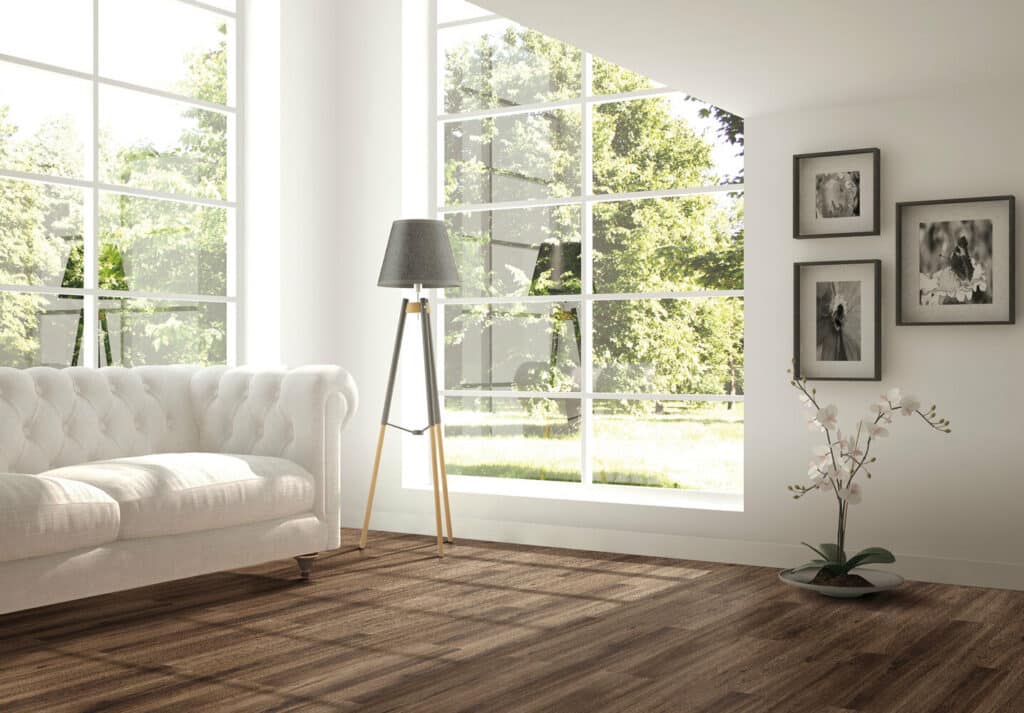
Why Wool Carpet is Considered Sustainable Flooring Option
Wool carpets are made from natural wool fibre. The most common type of wool carpet is 100% wool. It is soft, warm, and luxurious. It is perfect for rooms where you want to keep your feet warm and cozy.
The main reason why wool carpet is considered a sustainable flooring option is that it is environmentally friendly. It takes less energy than synthetic fibre products when wool is produced. It uses less water than many other materials. There is no chemical waste when making wool carpets.
It is also suitable for people who suffer from allergies. Wool carpet contains fewer allergens than some types of synthetic material. It is hypoallergenic and non-irritating. This means it is safe for those allergic to dust, dander, pollen, animal hair, feathers, and fur.
Wool carpet also reduces static electricity. Static electricity makes dust stick to furniture, clothes, and walls. It also attracts dirt and bacteria. Wool carpet eliminates static electricity by absorbing moisture.
Wool carpet lasts longer than any other kind of carpet. It resists fading and discoloration. It is fire retardant. It’s flame resistant. It’s UV resistant, and the list goes on.
What is bamboo flooring?
Bamboo flooring is made from the stalks of bamboo plants. They’re harvested when they reach a certain height and cut into pieces. After that, the pieces are dried and processed into planks. The process occurs at factories where workers use machines to separate the fibres from the stems. Then, the planks are sanded down until they become smooth. Finally, the planks are dyed and sealed.
Bamboo is a big deal in the world of eco-conscious materials. Bamboo offers several advantages over traditional wood alternatives, from furniture to building supplies. But while bamboo is often touted as one of the greenest options, it isn’t without drawbacks. Some say that bamboo floors are worse for the environment than regular hardwoods.
The problem stems from how bamboo grows. Unlike hardwoods like oak, maple, and mahogany, bamboo doesn’t grow naturally in temperate climates. Instead, it thrives in warmer areas, such as South America and Asia. As a result, much of the supply chain for bamboo involves shipping raw materials across vast distances, which increases emissions during transport.
In addition, bamboo is typically harvested by cutting down entire forests, which destroys habitat for animals and plants alike. And because bamboo is grown primarily in developing countries, the harvesting methods used tend to be less sustainable than those employed in developed nations.
What is Sustainably Engineered Hardwood Flooring?
The term “engineered hardwood” describes a type of flooring that combines a solid hardwood veneer with an engineered core. Solid hardwoods are grown from seedlings and take several years to mature. Plywood is manufactured from thin layers of wood glued together.
Manufacturers combine a solid hardwood veneer with an inner plywood structure to create a beautiful, durable, and environmentally friendly product from fewer slow-growing wood trees.
Manufacturers often use recycled materials to make plywood cores. This makes engineered hardwood far more sustainable than solid hardwood floors. But that solid wood veneers make engineered hardwood nearly indistinguishable from solid hardwood floors.
Sustainable engineered hardwood flooring is a type of engineered hardwood flooring produced from sustainably managed forests. It was developed to address concerns regarding the sustainability of traditional hardwood flooring products. The term “sustainable” refers to using environmentally friendly manufacturing processes, materials, and energy sources.
Sustainable engineered hardwood flooring is a type of engineered wood flooring manufactured from sustainably managed forests produced to reduce environmental impact through renewable resources. Sustainable engineered hardwood flooring is made from wood harvested from managed forests where trees are grown without pesticides and fertilizers. This process results in lower levels of greenhouse gas emissions than conventional practices. In addition, harvesting these forests reduces the land required for growing timber.
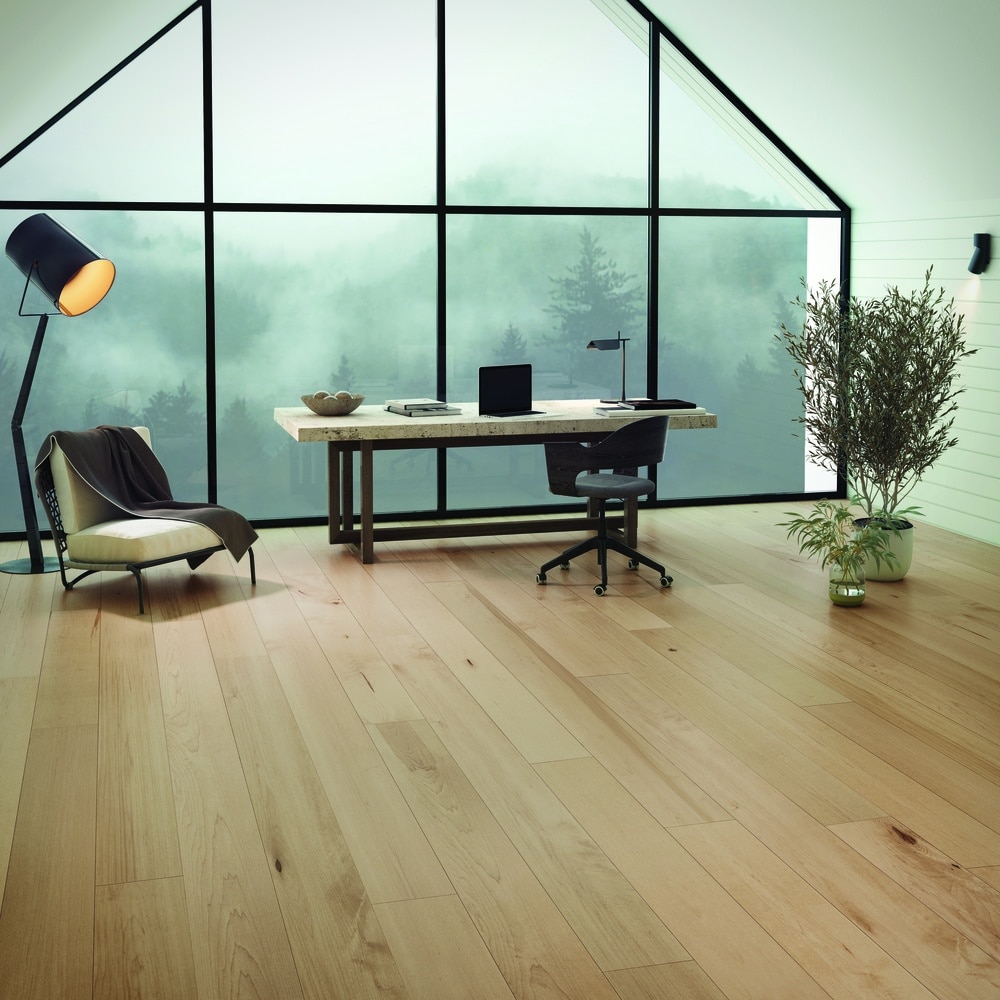
Top sustainable products when it comes to Engineered hardwood:
The 4 main key features of a sustainable floor:
- Transparency
- circularity
- renewability
- Energy Efficiency
How Transparency Is The Key To Finding A Sustainable Flooring Solution
Transparency is the ability to see what you are doing and why you are doing it. It’s when you know exactly where your money goes, who gets paid, and what products you use. To find a sustainable flooring solution, there must be transparency. If you don’t know where your money goes, then you cannot make informed decisions about whether or not to buy something. You won’t know if you’re getting value for your dollar, and you’ll never know if you’re making a difference.
The most common way to get transparency is through third-party audits. This means that someone else is auditing your business practices and reporting back to you so that you can make changes to improve them. When you do this, you can see what you’re doing wrong, and you can fix those problems before they become costly mistakes.
Another way to get transparency is to ask people directly. Ask flooring experts what they think about a particular product. Find out what their experiences were like and what they would change. When you ask these types of questions, you’ll begin to understand what you need to look for as a homeowner when finding a sustainable flooring solution.
How circularity in sustainability is key to creating a sustainable flooring solution
Circularity is the process of returning something back into itself. It’s the concept of taking something from one place and putting it elsewhere. The circular economy is a system where everything is recycled, reused, and repurposed. The circular economy aims to make products last longer, use fewer resources, and reduce waste. In this case, we want to reuse wood from old floors and put them back into new ones. This way, we don’t just recycle the wood but also the entire life cycle of the product.
The circularity of sustainability is the key to making a sustainable flooring solution because it allows us to take something out of our environment and put it back into our environment. We’re recycling wood from old floors and putting them back into new floors. This way, we recycle the wood and all the materials used to build the floor.
In addition, circularity makes a sustainable flooring solution much cheaper than traditional solutions. Traditional solutions require a lot of energy and resources to produce, transport and install. On top of that, they usually end up in landfills after their useful lives. A circular solution doesn’t require any of these things, so it’s much more affordable.
The Link Between Renewal and Sustainability
Sustainable development is the process of meeting human needs while maintaining the environment. It is the concept of developing strategies that ensure long-term economic growth without compromising the well-being of future generations. This means that sustainable development must take into account the impact of its activities on people and the planet.
Renewable energy sources such as solar power, wind power, geothermal power, hydroelectricity, biomass, wave power, tidal power, and biofuels are considered renewable because they do not deplete natural resources. In contrast, nonrenewable energy sources like coal, oil, gas, nuclear power, and uranium mining are considered nonrenewable because they cannot be replenished naturally.
Renewable energy sources are becoming more popular due to concerns about global warming and pollution caused by fossil fuels. However, there are also disadvantages associated with these types of energy sources. For example, most forms of renewable energy require large amounts of land for production. Also, some forms of renewable energy may cause harm to wildlife and ecosystems.
The main advantage of renewable energy sources is that they do not produce harmful emissions, which means they do not contribute to global warming. However, renewable energy sources do emit greenhouse gases during the production process. These emissions are usually released into the atmosphere when the energy source is used.
There are various ways to generate renewable energy. Some methods include photovoltaic cells, wind turbines, hydropower plants, fuel-cell technology, and microturbines. Each method uses a different type of energy source.
Photovoltaics convert light directly into electricity. Solar panels consist of photovoltaic cells that collect sunlight and convert it into direct current (DC) electricity. Photovoltaic cells are made of semiconductors, which absorb photons and create electron/hole pairs. When electrons move across the junction between two layers of semiconductor material, they create a voltage potential difference. This creates an electric field that allows current to flow.
Wind turbines harness kinetic energy from moving air currents. Wind turbines capture the wind’s kinetic energy and turn it into mechanical energy. A turbine consists of a rotor connected to a shaft. As the rotor turns, the shaft rotates, creating torque. Torque is the twisting force created when one object is turned inside another. The amount of torque produced depends on how fast the blades rotate.
Hydroelectricity converts water movement into electrical energy. Hydroelectric dams divert water from its ordinary course to create reservoirs behind the dam. Water flows out of the reservoir through generators, producing electricity. Most hydroelectric power stations are built next to rivers or streams.
Geothermal energy is heat generated within the Earth itself. Geothermal energy is found deep underground where rock formations conduct heat well. Heat pumps transfer the heat from the ground to buildings or equipment.
Biomass refers to any organic matter that can be converted into usable energy. Biomass includes plant materials, animal waste, wood chips, agricultural residues, municipal solid wastes, sewage sludge, food processing byproducts, and forest products.
Wave power is similar to ocean waves. Wave power devices are placed along coastlines to harness the power of waves. The motion of the sea generates electricity.
Now more than ever, flooring manufacturers are investing in finding ways to use such renewal energy sources in their manufacturing process. Flooring manufacturers are now turning to renewable energy sources for their manufacturing processes. In part, it’s because they can save money using these types of resources.
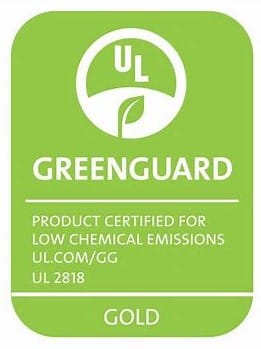
How do you measure energy efficiency in your flooring manufacturing process?
Energy Efficiency is the ability to convert input into output without wasting resources. It is measured differently depending on the resource used (e.g., electricity, water, natural gas). Energy efficiency is one of the essential aspects of sustainable development because it helps reduce environmental pollution and conserve natural resources.
The main goal of this project is to find out how much energy is wasted during the manufacturing process of laminate floors. The objective is to identify where the most significant savings could be made and what measures should be taken to achieve them.
Good flooring manufacturers are constantly finding ways to improve by using the following tools to collect data:
• Energy consumption measurement devices
• Data from the factory’s management system
• Energy usage reports
• Internal audits
Some companies offer software programs that help you monitor energy consumption. These programs let you view graphs showing how much energy you use throughout the day. Some programs also provide information about how much money you spend on energy.
In conclusion, sustainable flooring is a term used to describe products made from renewable resources like wood, bamboo, cork, and wool carpet. These materials are often considered environmentally friendly because they use natural resources instead of petroleum-based products. They also have lower emissions than traditional hardwood floors. Sustainable flooring is becoming increasingly popular among consumers looking for eco-friendly options.
Key Consideration Choosing Sustainable Flooring for your Home in Metro Vancouver.
Materials and Sustainability:
One of the primary considerations is the type of materials used. Sustainable flooring options such as cork, linoleum, and reclaimed hardwood are popular choices. Cork, sourced from the bark of cork trees, is a renewable resource that offers a unique blend of comfort and durability. Linoleum, made from natural materials like linseed oil, limestone, and cork dust, is biodegradable and low in volatile organic compounds (VOCs), making it a safe choice for indoor air quality. Reclaimed hardwood, salvaged from old buildings or structures, reduces the demand for new lumber and contributes to forest stewardship.
Environmental Impact:
The environmental footprint of the flooring materials is another crucial factor. Businesses that prioritize materials like glass tiles, made from recycled glass, or carpets made from recycled or organic materials, demonstrate a commitment to reducing waste. Additionally, sourcing materials from companies that are certified by environmental bodies like the FSC (Forest Stewardship Council) ensures that the products are harvested responsibly and sustainably.
Durability and Maintenance:
The durability and maintenance requirements of sustainable flooring options are essential for Canadian homeowners. Water-resistant materials like PVC or certain types of linoleum are suitable for areas prone to moisture. The ease of maintenance, resistance to mold, and the ability to withstand wear and tear without toxic finishes are vital for a long-lasting and healthy home environment.
Health and Safety:
Indoor air quality is a significant concern for many homeowners. Choosing flooring options low in VOCs and toxic substances is crucial. Materials like jute, sisal, and natural paints contribute to a safer indoor environment, free from harmful chemicals that can off-gas into the home.
Aesthetics and Design:
The aesthetic appeal of the flooring material is also a key consideration. Sustainable flooring options now come in a variety of finishes, patterns, and colors, allowing homeowners to choose options that fit their decor and style preferences. From the rustic charm of reclaimed hardwood to the modern look of concrete or glass tiles, there is a sustainable flooring option to suit every taste.
Cost and Value:
The cost of sustainable flooring is an important factor for many. While some options might have a higher initial cost, the long-term value they provide in terms of durability, low maintenance, and positive environmental impact can be a wise investment. Additionally, some sustainable flooring options, like insulated flooring, can contribute to reduced heating costs, adding to their overall value.
Installation and Aftercare:
Finally, the ease of installation and the aftercare support provided by the business are important. Professional guidance on installing different types of flooring, tips for maintenance, and availability of aftercare services ensure a smooth transition to sustainable flooring for homeowners.
Choose Canadian Home Style for your Vancouver flooring projects.
Canadian Home Style is your family-owned and operated flooring retailer with a showroom in North Vancouver, BC. We provide full-service commercial and residential flooring solutions across the Lower Mainland with an extended warranty. We are proud BC Floor Covering Association (BCFCA) and the National Wood Flooring Association (NWFA) members. In addition, we have won the Consumer’s Choice Awards back-to-back in 2021, 2022, 2023 and 2024 for our commitment to business excellence. We are considered the highest-rated flooring experts in Metro Vancouver. We pride ourselves on holding the highest standards in the flooring industry. We have a strict policy of “not selling or displaying any products we wouldn’t want in our homes to uphold our high standards.” Before we select a product to feature, we carefully assess product quality, off-gassing, warranties, and responsible sourcing. Book now to visit our North Vancouver flooring showroom; we can help you choose the perfect floor for your home or business.
Our mission is to help homeowners create beautiful homes that reflect their lifestyles while reducing energy consumption and conserving resources. We provide our clients with innovative products, services and education. Our vision is to become Canada’s leading sustainable flooring solutions provider. Our values include integrity, respect, honesty and transparency. These principles guide us as we strive to provide outstanding customer service.
We believe that our success depends on the success of our clients and their customers. We work hard to ensure our clients get the most out of their investments. Our team consists of highly skilled professionals who are experts in their field. They have years of experience working together and know what works and what doesn’t. They understand how to solve problems quickly and efficiently. We are committed to providing excellent customer service. We listen carefully to our client’s concerns and suggestions. We take these into account when planning and executing projects. We always strive to exceed expectations.
Why Choos Us?
Cork Flooring and Quercus suber: Canadian Home Style offers high-quality cork flooring, derived from the bark of the Quercus suber tree. This sustainable material is harvested without harming the tree, making it an excellent choice for those looking to minimize their environmental impact. Cork flooring is not only eco-friendly but also provides natural insulation, soundproofing, and a comfortable underfoot feel.
Linoleum and Bamboo Flooring: In addition to cork, Canadian Home Style also specializes in linoleum and bamboo flooring. Their linoleum products, made from natural materials like linseed oil, are biodegradable and low in volatile organic compounds (VOCs), ensuring better indoor air quality. Bamboo flooring, made from one of the fastest-growing plants on Earth, offers durability and elegance, making it a popular choice for those seeking both sustainability and style.
Hardwood and Timber Options: For lovers of traditional aesthetics, Canadian Home Style provides a variety of hardwood and timber flooring options. These are sourced responsibly to ensure minimal environmental impact. Their hardwood floors, including options in organic cotton finishes, offer timeless elegance and longevity.
Green Building Materials: Canadian Home Style’s commitment to green building extends beyond flooring to include sustainable countertops and other materials. Their countertops, made from natural products like wood and organic materials, are designed to be both durable and environmentally friendly.
Adhesives and Lamination: Understanding the importance of healthy indoor environments, the company uses adhesives and lamination processes that are low in VOCs. This approach minimizes the release of harmful chemicals, ensuring a safer home environment.
Wool and Natural Rubber Products: In addition to their flooring options, Canadian Home Style also offers products made from wool and natural rubber. These materials provide eco-friendly alternatives to synthetic options, further demonstrating the company’s dedication to sustainability.
Vinyl Composition Tile and Wood Flooring: For those looking for more affordable yet sustainable options, Canadian Home Style’s vinyl composition tile and wood flooring selections offer versatility and durability. These products, while economical, do not compromise on environmental responsibility.
Care and Maintenance: Canadian Home Style understands the importance of proper care and maintenance in extending the life of sustainable flooring. They recommend environmentally friendly cleaning methods, advising against harsh chemicals like bleach. Instead, they suggest using natural cleaning solutions and efficient vacuum cleaners to maintain the beauty and longevity of the floors.
Vancouver flooring Services We Offer:
- Project consultation
- Product specifications for projects
- Sustainable material supply
- Flooring installation services
- Hardwood sanding and refinishing
- Removal of old flooring
Main Areas of Service in British Columbia:
- Vancouver
- North Vancouver
- West Vancouver
- Burnaby
- Coquitlam
- Squamish
- Whistler
- Maple Ridge
- Pitt Meadows
- Port Moody
- White Rock
Canadian Home Style difference
- Quality product
- Family-owned and operated
- Award-winning service and workmanship
- in-house flooring installers
- Environmentally and sustainably cautious
- Competitive price
- Industry knowledge
Read our last flooring blog here:

